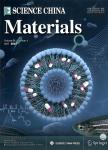版权所有:内蒙古大学图书馆 技术提供:维普资讯• 智图
内蒙古自治区呼和浩特市赛罕区大学西街235号 邮编: 010021

作者机构:State Key Laboratory for Advanced Metals and MaterialsUniversity of Science and Technology Beijing Beijing Advanced Innovation Center for Materials Genome EngineeringUniversity of Science and Technology Beijing School of Mathematics and StatisticsZhengzhou University School of AerospaceMechanical & Mechatronic EngineeringThe University of Sydney Key laboratory of CryogenicsTechnical Institute of Physics and ChemistryChinese Academy of Sciences Department of Materials Science and EngineeringThe University of Tennessee
出 版 物:《Science China Materials》 (中国科学(材料科学(英文版))
年 卷 期:2019年第62卷第6期
页 面:853-863页
核心收录:
学科分类:08[工学] 080502[工学-材料学] 0805[工学-材料科学与工程(可授工学、理学学位)]
基 金:supported in part by the Nationa Natural Science Foundation of China (51471025, 51671020, 51471024 and 11771407) the Department of Energy (DOE), Office of Fossil Energy, National Energy Technology Laboratory (DE-FE-0011194) the support from the US Army Research Office project (W911NF-13-1-0438) the support from the National Science Foundation (DMR-1611180 and 1809640)
主 题:high-entropy alloy liquid-helium temperature twinning phase transition serration feature
摘 要:Seldom could metals and alloys maintain excellent properties in cryogenic condition, such as the ductility, owing to the restrained dislocation ***, a face-centered-cubic(FCC) CoCrFeNi highentropy alloy(HEA) with great ductility is investigated under the cryogenic environment. The tensile strength of this alloy can reach a maximum at 1,251±10 MPa, and the strain to failure can stay at as large as 62% at the liquid helium temperature. We ascribe the high strength and ductility to the low stacking fault energy at extremely low temperatures,which facilitates the activation of deformation ***, the FCC→HCP(hexagonal close-packed) transition and serration lead to the sudden decline of ductility below 77 K. The dynamical modeling and analysis of serrations at 4.2 and 20 K verify the unstable state due to the FCC→HCP transition. The deformation twinning together with phase transformation at liquid helium temperature produces an adequate strain-hardening rate that sustains the stable plastic flow at high stresses, resulting in the serration feature.